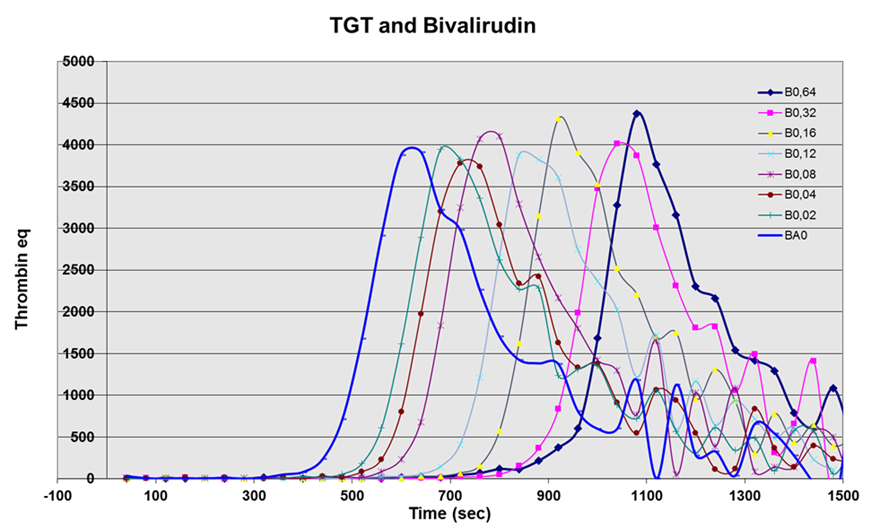The various thrombin generation tests (TGA, CAT) are sensitive methods for an assessment of the thrombin formation in epidemiological studies, anticoagulant therapy as well as for testing thrombogenicity of biomaterials.
This test determines the kinetics of the appearance of active thrombin in plasma after the activation of coagulation. The basic TGT parameters are: endogenous thrombin potential (ETP)–the sum amount of active thrombin which is present in the system over entire time of experiment, maximal thrombin concentration in the sample (peak thrombin), time to reach this maximal concentration (t-max), and lag-time before the beginning of accelerated thrombin production (t-lag). In the presence of most anticoagulants, the first two parameters decrease, while t-max and t-lag increase. As depicted for thrombin inhibition, as depicted on example data, only t-max and t-lag increase.
EXAMPLE DATA

Figure: Thrombin generation in the presence of various concentrations (in uM) of the direct thrombin inhibitor bivalirudin. Only the lagtime increases.
GBS has several variants of this test for specific clinical situations and R&D. Plasma can be tested with and without removal of microvesicles. Platelets can be added.
- ● Inherited bleeding disorders (hemophilia, Von Wilebrand disease)
- ● Thrombotic disorders (venous thrombosis, SLE)
- ● Monitoring anticoagulant therapy
- ● Drug-induced risk of thrombosis (sterioids, contraceptives)
- ● Biocompatibility
